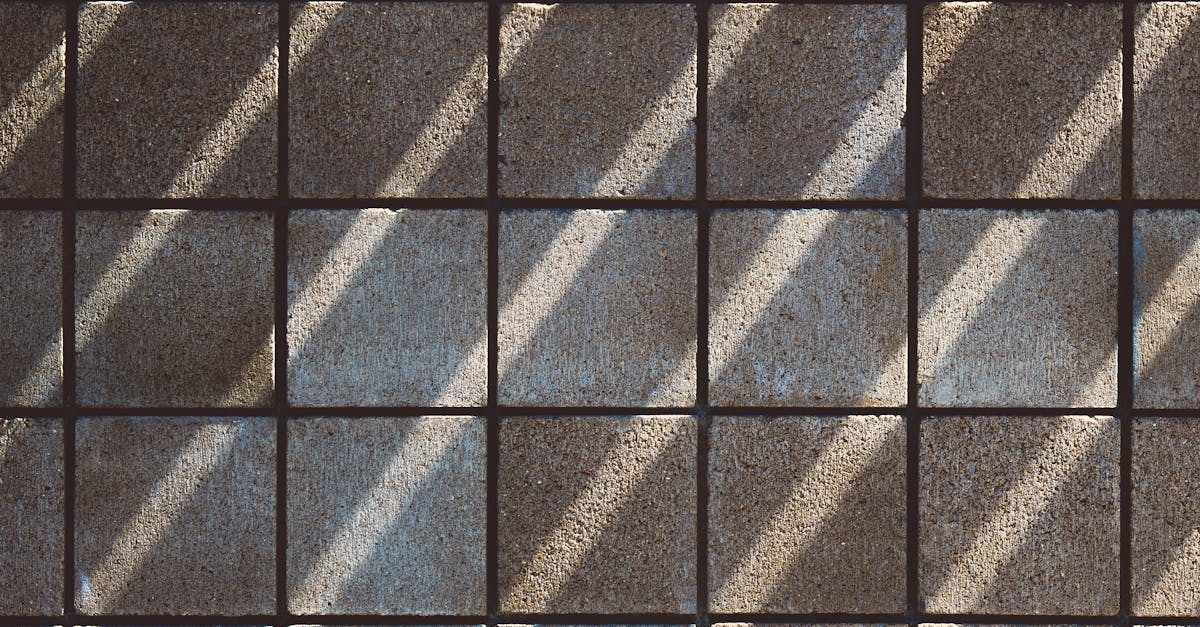
The installation process for Calacatta marble tiles requires meticulous attention to detail to achieve a flawless finish. Before beginning the installation, ensure that the surface is clean, flat, and dry to provide a solid foundation for the tiles. It is essential to use a high-quality adhesive that is suitable for marble to secure the tiles in place effectively.
Table Of ContentsWhen laying the Calacatta marble tiles, start from the center of the room and work your way outwards to ensure a symmetrical layout. Use tile spacers to maintain uniform gaps between the tiles for a professional look. Once the tiles are in place, apply grout carefully to fill the gaps, ensuring that it complements the beauty of the marble. Finally, seal the tiles to protect them from stains and maintain their lustre for years to come.
On the other hand, one of the main drawbacks of travertine tiles is that they require regular maintenance to keep them looking their best. The porous nature of travertine makes it prone to staining from spills and moisture, so sealing the tiles regularly is necessary to protect them from damage. Furthermore, travertine tiles can be more expensive than other types of flooring options, which may be a consideration for those on a tight budget.Related Links
Durability and Maintenance of Travertine SurfacesDIY Installation Tips for Calacatta Marble Tiles
Travertine surfaces are renowned for their durability, making them a popular choice for high-traffic areas in residential and commercial spaces. The natural characteristics of travertine contribute to its ability to withstand wear and tear over time. Although travertine is a durable material, it is essential to properly maintain its surface to ensure longevity and preserve its aesthetic appeal. Regular cleaning with a mild detergent and water is recommended to prevent the buildup of dirt and grime, which can detract from the beauty of the stone.Comparing Calacatta Marble Tiles with Other Marble Varieties
a crucial role in pricing. Tiles sourced from prestigious quarries or those with unique veining patterns from specific regions are typically priced higher than more common varieties due to their exclusivity and aesthetic appeal.
FAQS
What is the history behind travertine tiles?
Travertine tiles have a rich history dating back to ancient Rome, where they were used in the construction of iconic structures such as the Colosseum and the Roman Forum. The natural stone has been prized for its durability and aesthetic appeal for centuries.
Where does travertine come from?
Travertine is a type of limestone that is formed from mineral deposits in natural hot springs. It is commonly found in countries such as Italy, Turkey, Iran, Mexico, and Peru. Each region imparts its unique characteristics to the travertine, influencing its colour and veining patterns.
What makes travertine tiles a popular choice for homeowners?
Travertine tiles are popular among homeowners due to their timeless beauty, durability, and versatility. They can be used in a variety of settings, from traditional to contemporary, and add a touch of elegance to any space.
How should travertine tiles be maintained to ensure their longevity?
To maintain the beauty and longevity of travertine tiles, it is important to seal them regularly to protect against stains and moisture. Routine cleaning with a pH-neutral cleaner and avoiding harsh chemicals will help preserve the natural beauty of the stone.
Are travertine tiles suitable for outdoor use?
Yes, travertine tiles are an excellent choice for outdoor use due to their ability to withstand varying weather conditions. They are commonly used for patios, pool decks, and outdoor kitchens, adding a touch of sophistication to outdoor living spaces.
Terms of UseRelated Links
DIY Installation Guide for Travertine TilesTop Design Ideas for Incorporating Travertine Tiles in Your HomePrivacy Policy
Incorporating Travertine Tiles in Outdoor Spaces: What You Need to Know
Tips for Choosing the Right Colour of Travertine Tiles for Your Space
The Environmental Impact of Using Travertine Tiles in Your Home
Understanding the Different Finishes Available for Travertine Tiles
Cost Comparison: Travertine Tiles vs Other Stone Floor Options
How to Clean and Maintain Travertine Tiles
Pros and Cons of Using Travertine Tiles for Your Flooring